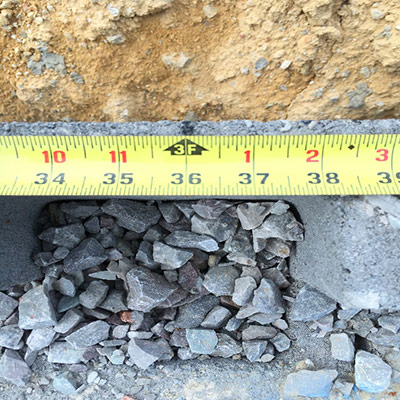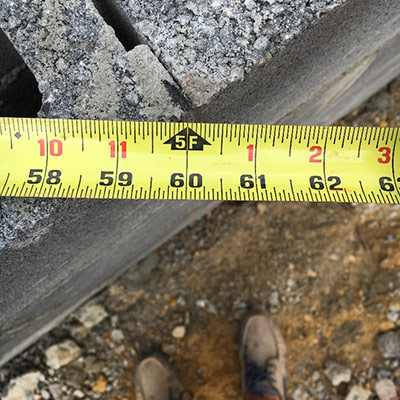3, 4 , 5 Method to Find Perfectly Square Corner
In any type of carpentry project, from building decks and sheds to laying out an entire house, it’s vital your walls are plumb and level and your corners are square. Levels will take care of the first two,, but what about squaring your corners?
If you remember your high school geometry class, you may remember The Pythagorean Theorem which states:
The square of the hypotenuse (side opposite right corner) is equal to the sum of the squares of the other two sides or A2 + B2 = C2
Let’s put this theory to use in layman’s terms using the 3, 4, 5, method, which is used on our sites daily in layout and to check block and framing work.

While checking our block mason’s work prior to pouring our pad, I’ll use my speed square for quick reference as well as the 3, 4, 5 method to check his corners. The 3, 4, 5, method is quick and easy to use and ensures all your corners are square. You can use any increments including inches, feet, or centimetres and any multiplier of the number you choose, and many times we do for larger layouts, but they must be consistent. (i.e., A = 3’ x 2’ =6’ , B = 4’ x 2’ = 8’ & C = 5’ x 2’ = 10’) For simplicity terms, I’m using 3’ , 4’, and 5’ as my numbers, so let’s get started

Step 1 – Starting from the corner point, pull a tape measure down the first wall or line A and mark 3’.

Step 2 – Starting from same corner, pull a tape measure down the second wall or line B and mark 4’.

Step 3 – Now pull a tape measure between your two marked lines which is your hypotenuse or line C and your tape should read 5’. If it’s more than 5’, the corner is not square and outside 90 degree. If it’s less than 5’ then your corner is under 90 degrees. My tape reads exactly 5’ so I know my corner is exactly square.









